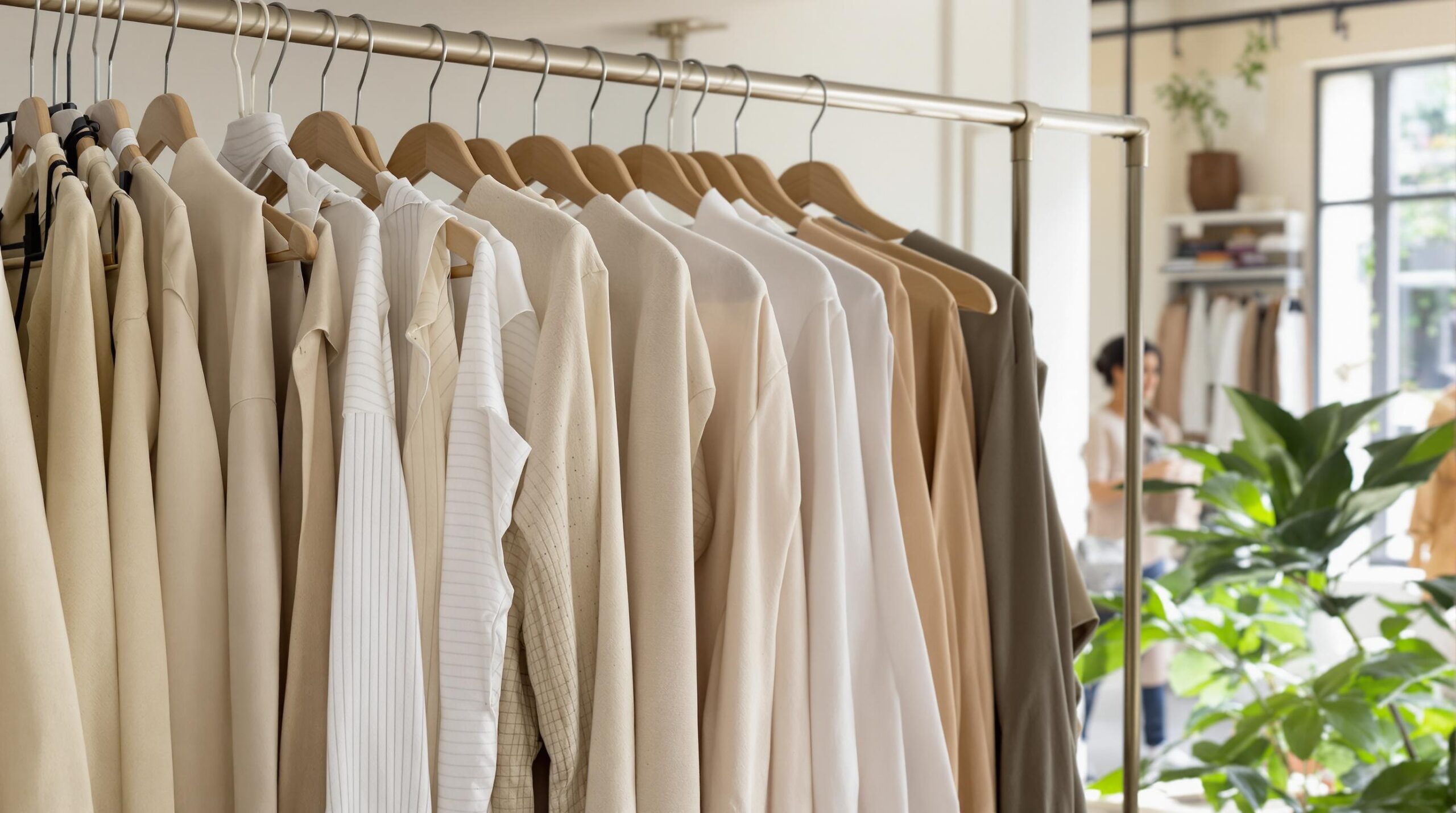Minimalist fashion has gained popularity in recent years. It emphasizes simplicity, functionality, and timelessness in clothing choices. As more individuals adopt minimalist fashion trends, the demand for sustainable wardrobe choices has also increased. This shift towards minimalism reflects broader societal changes in consumer behavior, environmental consciousness, and personal style preferences. Understanding the impact of minimalist fashion on sustainable wardrobes offers insights into both the fashion industry and sustainable living.
The Rise of Minimalist Fashion
The minimalist fashion trend began gaining traction in the early 21st century. It stemmed from a desire to counter fast fashion’s excess. This movement encourages individuals to focus on quality over quantity in their clothing choices. Minimalist fashion often features neutral colors, clean lines, and versatile pieces that can be worn in multiple settings. The appeal of minimalist fashion lies in its timelessness, allowing individuals to continue wearing their favorite pieces for years.
Minimalism’s rise can be attributed to growing environmental awareness and dissatisfaction with fast fashion’s throwaway culture. Fast fashion prioritizes speed and low cost, leading to lower-quality clothing that quickly becomes obsolete. Consumers increasingly reject this cycle, seeking alternatives that align with their values. Minimalism fulfills this need by promoting mindful consumption and sustainable living through thoughtful wardrobe choices.
Minimalism’s Sustainability Benefits
Adopting minimalist fashion offers numerous sustainability benefits. Most notably, it reduces excessive clothing consumption and waste production. Consumers produce less textile waste by focusing on fewer high-quality items, contributing to environmental conservation. Minimalist fashion also encourages supporting brands that prioritize ethical manufacturing and eco-friendly materials.
Minimalist wardrobes often feature versatile clothing items that can be mixed and matched. This reduces the need for frequent shopping, further reducing environmental impacts. By investing in durable pieces, individuals can extend the lifespan of their clothing. This addresses the issue of frequent disposal associated with fast fashion. Moreover, minimalist fashion encourages consumers to consider every product’s lifecycle.
Economic Considerations
Minimalist fashion can result in significant economic benefits for both consumers and the fashion industry. Investing in high-quality, durable pieces means spending less over time for consumers. These clothing items last longer and require less frequent replacement. Initially, minimalist items may have a higher price tag. Over the long term, their durability makes them cost-effective. Consumers also save money by resisting impulsive purchases and focusing on clothing items they need.
For the fashion industry, minimalist trends encourage companies to produce fewer but higher-quality products. This shift can reduce production costs and improve profit margins. Brands catering to minimalist fashion can build strong customer loyalty through transparency and commitment to quality. Consumers are attracted to brands that align with their values. As a result, businesses focusing on sustainability and minimalism can gain a competitive edge.
Minimalism and Personal Style
Minimalist fashion also impacts personal style, allowing individuals to develop a unique signature look. People can express their personalities without excessive consumption by curating a wardrobe of cohesive, versatile pieces. Minimalism focuses on individuality through simplicity, empowering people to make conscious choices reflecting their values and aesthetics.
The minimalist approach encourages individuals to prioritize what truly matters in their wardrobes. It steers them away from trends that quickly fade. Individuals can maintain a consistent personal style by selecting timeless pieces amidst ever-changing trends. This approach fosters a deeper connection between individuals and their clothing. It preserves the value and meaning behind each piece they own.
Challenges and Criticisms
Despite its benefits, minimalist fashion trends face challenges and criticisms. Some argue that minimalism can be exclusionary due to its association with privilege and cost. Quality pieces often come with a higher price tag. They may not be accessible to those with limited financial means.
Critics also highlight the potential for minimalism to become a trend rather than a lifestyle. It could result in consumers purchasing new minimalist items rather than utilizing existing clothing. The pressure to adhere to a minimalist aesthetic may lead individuals to discard functional items that do not fit this look. Individuals and brands must prioritize genuine sustainability and mindful consumption over aesthetic appearances alone to address these criticisms.
Transitioning to a Minimalist Wardrobe
A thoughtful approach is necessary for those interested in adopting a minimalist wardrobe. Transitioning involves evaluating existing clothing, identifying essentials, and embracing a mindset of mindful consumption. A successful transition requires patience as individuals gradually curate a collection that reflects their style and values. Opting for versatile pieces allows individuals to create various outfit combinations.
Additionally, embracing sustainable brands and supporting ethical companies aligns with the values of minimalist fashion. Consumers can further contribute to sustainability by purchasing second-hand clothing. This diverts textile waste from landfills and reduces demand for new products. Individuals are empowered to make environmentally conscious choices by incorporating these practices into a minimalist wardrobe.
The Role of Brands and Retailers
Brands and retailers are crucial in promoting minimalist fashion and sustainability practices. By creating collections that prioritize quality, versatility, and ethical production, companies can drive positive change within the industry. Transparent supply chains and environmentally friendly materials should become the standard for all clothing production. Brands should communicate their commitment to sustainability, encouraging consumers to make conscious purchases.
Retailers can also support minimalist fashion by offering second-hand options and promoting recycling programs. Initiatives like these can extend the lifecycle of clothing items and reduce waste. Collaborating with consumers, brands, and retailers can foster an ecosystem that values longevity and mindful consumption. This transition ultimately benefits the environment and aligns with consumer expectations for ethical practices.
Conclusion
The impact of minimalist fashion trends on sustainable wardrobe choices is significant. It reflects a growing shift in consumer values towards mindful consumption and environmental consciousness. Minimalism challenges the prevailing norms of fast fashion. It invites individuals to consider the broader implications of their clothing choices. By prioritizing quality, versatility, and sustainability, minimalist fashion offers a promising path forward for the industry. As embraced by both consumers and brands, it can lead to a more sustainable future.

